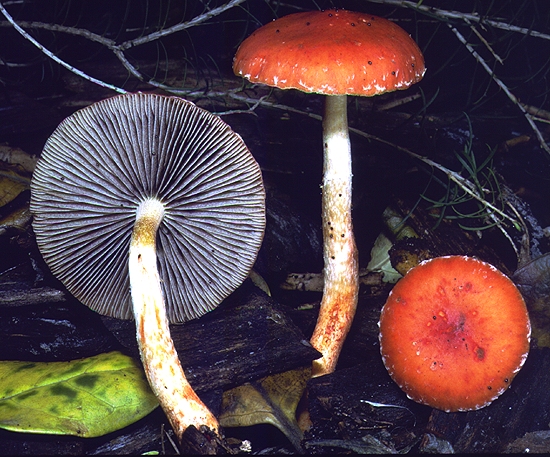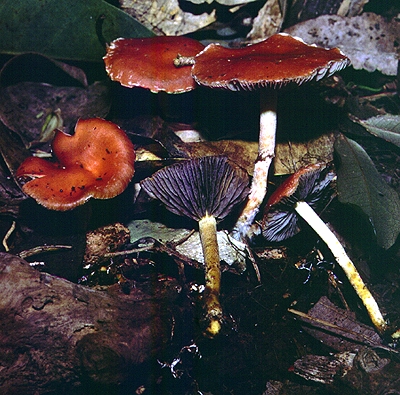
Stropharia aurantiaca (Cooke) P.D.Orton

Common name: None.
Description: The caps are up to 5 cm in diameter and are bright tomato-red, smooth, dry and usually slightly umbonate. Usually there is a ring of white flecks or scales around the edge of the cap. The gills are at first grey then purplish brown and are very narrowly adnate or slightly upcurved where they meet the stem. The stems are up to 10 cm long, about 47 mm thick, usually somewhat twisted or wavy, dry and paler tomato-red than the cap.
The spores measure 1014 × 68 µm and are ellipsoidal smooth and brown. A germ pore is present.
Substratum: In forests, Stropharia aurantiaca is always found on litter, usually in twos, sometimes threes but also often solitary. It is sometimes found on woody mulch in gardens.
Distribution: Known from Queensland, New South Wales, Victoria, Tasmania and South Australia.
Notes: Although it was first described from Europe in the late 1800s, this fungus originally came from Australia. At that time boxes of Australian fungal material were often sent to European mycologists. Specimens and fragments were often discarded indiscriminately, and, as a result, several Australian fungal species became established. This species was one of them and was described as a British species by the English mycologist M.C.Cooke. Depending upon the interpretation of the particular author, Stropharia aurantiaca has also been placed in the genus Hypholoma. A previous name for this species was Psilocybe ceres.

